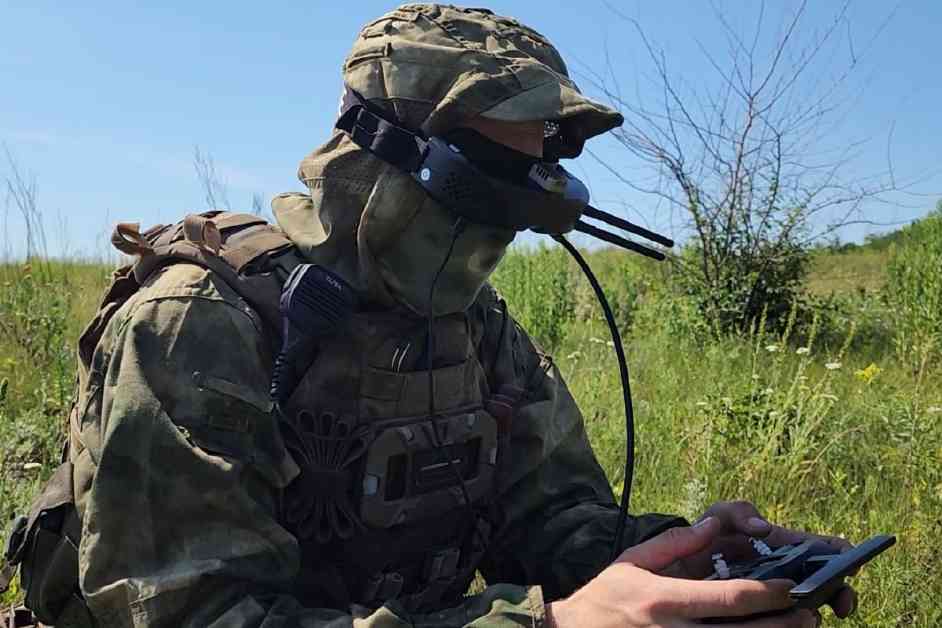A recent series of explosions involving FPV goggles rigged with explosives has left at least eight Russian drone operators severely injured in various regions, as reported by the Telegram channel Dosye Shpiona (“Spy’s Dossier”). These incidents, occurring in early February, targeted Russian military units in Belgorod, Kursk, Luhansk, and Donetsk oblasts, sparking concerns and raising questions about potential security breaches and the safety of military personnel.
The attacks bear a striking resemblance to Israel’s September 2024 assault on the Lebanese militant group Hezbollah, where hidden explosives in pagers and walkie-talkies were remotely detonated. Ukrainian intelligence agencies have refrained from making official statements regarding the operation or any potential involvement, according to Militarnyi, adding a layer of mystery and intrigue to the unfolding events.
In the months leading up to the explosions, between January and February 2025, Russian military units received around 80 sets of Skyzone Cobra FPV goggles as donations from various volunteer organizations. However, all shipments originated from an anonymous individual who presented the equipment as “humanitarian aid” for Russian drone operators, setting the stage for a sinister plot to unfold.
Initial reports indicated that the scheme was uncovered before any devices were activated, suggesting a potential security breach or a stroke of luck that prevented further casualties. Dosye Shpiona detailed the first explosion on 4 February in Belgorod Oblast, where a Russian serviceman activated his FPV headset, resulting in severe facial and eye injuries. Over the subsequent three days, between 4 and 7 February, seven more explosions rocked different regions, impacting multiple Russian units and raising concerns about the extent of the sabotage.
Upon investigation, authorities found that each pair of FPV goggles was booby-trapped with C-4 explosives, a detonator, and a concealed battery. The explosive device was cleverly wired to trigger upon activation of the internal cooling fan, making it nearly impossible to detect the sabotage beforehand, as noted by Militarnyi. The intricate nature of the setup points to a well-planned and sophisticated operation aimed at causing maximum harm and disruption.
In response to the attacks, Russian authorities swiftly mobilized an operation to identify and remove any remaining compromised FPV goggles from military units, ensuring the safety of their personnel. Meanwhile, Dosye Shpiona reported that the individual responsible for supplying the equipment departed Russia on 3 February, flying from Moscow to Istanbul, raising questions about their motives and potential connections to the incidents.
As the Russo-Ukrainian conflict rages on, drone warfare has emerged as a pivotal battleground, with unmanned vehicles playing a crucial role in both offensive and defensive strategies. The targeting of drone operators highlights the strategic value placed on these individuals, with Ukraine leveraging advanced precision weapons like GMLRS rockets to neutralize Russian drone teams. The evolving tactics and technologies in drone warfare underscore the complexity and intensity of modern military conflicts, where innovation and adaptation are key to gaining an edge on the battlefield.
Expert Insights on Drone Warfare and Military Sabotage
To shed light on the implications of these recent events and the broader landscape of drone warfare, we turned to military analyst Dr. Anna Petrov, who shared her expertise on the subject. According to Dr. Petrov, the use of explosive-rigged FPV goggles represents a dangerous escalation in tactics, targeting frontline operators with devastating consequences. She emphasized the need for enhanced security measures and vigilance in detecting such threats to prevent future incidents and safeguard military personnel.
With the increasing reliance on drones for reconnaissance, surveillance, and combat operations, the vulnerability of drone operators to targeted attacks underscores the evolving nature of modern warfare. As technology continues to advance on all fronts, the need for comprehensive defense mechanisms and countermeasures becomes imperative to mitigate risks and protect military assets effectively.
The Future of Drone Warfare: Challenges and Opportunities
Looking ahead, the future of drone warfare presents a complex landscape of challenges and opportunities for military forces worldwide. As drones become more integrated into military operations, the potential for sabotage and targeted attacks on essential personnel underscores the critical need for robust security protocols and risk mitigation strategies.
Innovations in drone technology, coupled with sophisticated tactics and strategies, will shape the evolving dynamics of conflicts on the global stage. The ability to adapt, innovate, and respond effectively to emerging threats will be paramount in maintaining a competitive edge and safeguarding national security interests in an increasingly complex and unpredictable world.
The incidents involving explosive-rigged FPV goggles serve as a stark reminder of the dangers and vulnerabilities inherent in modern warfare, highlighting the need for constant vigilance, strategic foresight, and collaborative efforts to address emerging threats and ensure the safety and security of military personnel in an ever-changing geopolitical landscape.

















